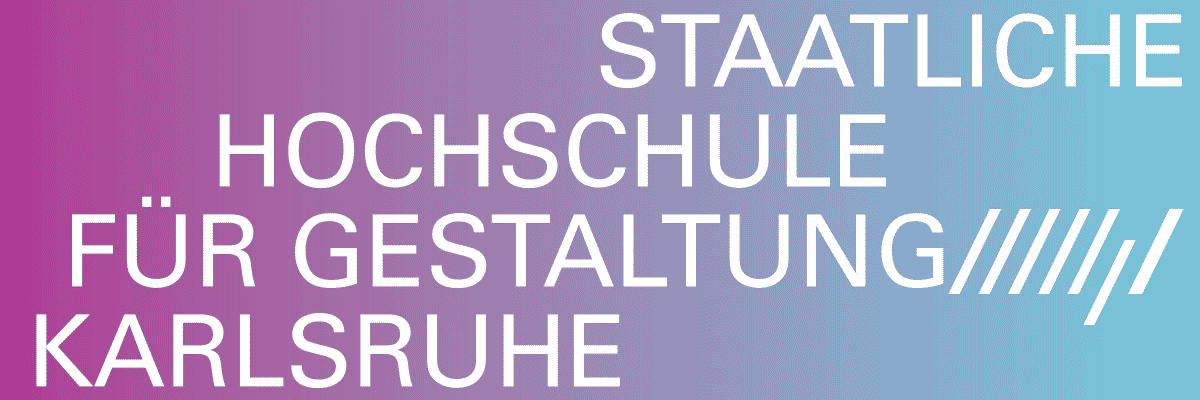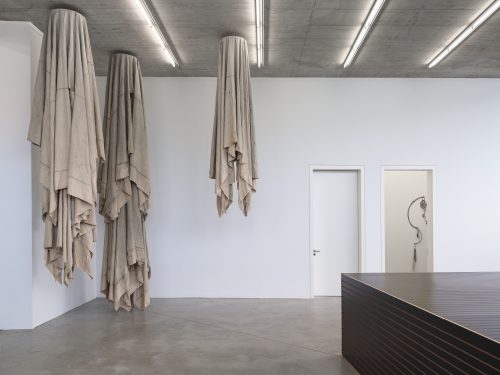
Léa Katharina Meier
The Great Story of Cleanliness

Léa Katharina Meier, La Grande Storia di Pulizia, 2024, performative reading. Text, costume design and performance by Léa Katharina Meier, sounds composition by Serge Teuscher, Italian translation by Veronica Pecile. Photo by Roberto Apa
Advertisement

Léa Katharina Meier, La Grande Storia di Pulizia, 2024, performative reading. Text, costume design and performance by Léa Katharina Meier, sounds composition by Serge Teuscher, Italian translation by Veronica Pecile. Photo by Roberto Apa

Léa Katharina Meier, La Grande Storia di Pulizia, 2024, performative reading. Text, costume design and performance by Léa Katharina Meier, sounds composition by Serge Teuscher, Italian translation by Veronica Pecile. Photo by Roberto Apa

Léa Katharina Meier, La Grande Storia di Pulizia, 2024, performative reading. Text, costume design and performance by Léa Katharina Meier, sounds composition by Serge Teuscher, Italian translation by Veronica Pecile. Photo by Roberto Apa

Léa Katharina Meier, La Grande Storia di Pulizia, 2024, performative reading. Text, costume design and performance by Léa Katharina Meier, sounds composition by Serge Teuscher, Italian translation by Veronica Pecile. Photo by Roberto Apa

Léa Katharina Meier, La Grande Storia di Pulizia, 2024, performative reading. Text, costume design and performance by Léa Katharina Meier, sounds composition by Serge Teuscher, Italian translation by Veronica Pecile. Photo by Roberto Apa

Léa Katharina Meier, La Grande Storia di Pulizia, 2024, performative reading. Text, costume design and performance by Léa Katharina Meier, sounds composition by Serge Teuscher, Italian translation by Veronica Pecile. Photo by Roberto Apa

Léa Katharina Meier, La Grande Storia di Pulizia, 2024, performative reading. Text, costume design and performance by Léa Katharina Meier, sounds composition by Serge Teuscher, Italian translation by Veronica Pecile. Photo by Roberto Apa

Léa Katharina Meier, La Grande Storia di Pulizia, 2024, performative reading. Text, costume design and performance by Léa Katharina Meier, sounds composition by Serge Teuscher, Italian translation by Veronica Pecile. Photo by Roberto Apa

Léa Katharina Meier, La Grande Storia di Pulizia, 2024, performative reading. Text, costume design and performance by Léa Katharina Meier, sounds composition by Serge Teuscher, Italian translation by Veronica Pecile. Photo by Roberto Apa

Léa Katharina Meier, La Grande Storia di Pulizia, 2024, performative reading. Text, costume design and performance by Léa Katharina Meier, sounds composition by Serge Teuscher, Italian translation by Veronica Pecile. Photo by Roberto Apa
When, in the middle of the night, this world erupts after the great fires that shaped it, it is covered with a thick layer of dirt.
In this desolate, troubled, and downcast landscape, ogresses and giantesses widen their eyes for the first time upon a pitch-dark night. They stretch their bodies, they linger, they dance as their bodies and flesh mark the landscape.
The imprints of their big hands, their very big mouths, their very very big buttocks, and their very very very big feet create high mountains and deep lakes.
Then, where the sun peaks, before the moon rises, a big dirty house appears. Its shape is quite strange because it looks like a very very very very large bottle of red wine. A bottle big enough to house several people. On heavy evenings, everyone goes out together to breathe fire, to ride garbage trucks, and mostly, to rub against the corners of the highest towers in the city.
The ogresses and giantesses are filled with desire. They make love and give birth to several children. And then, from the union of an ogress and a giantess, Cleanliness is born.
Time passes and the earth revolves many times around the Sun. As Cleanliness grows up, she becomes more and more different from the other children. She appreciates order and hygiene and likes everything to be spotless. Cleanliness hates fluids and odours. She abhors saliva in her eyes. She abhors every sign of desire. She abhors every sign of weakness and failure.
But what does she want to clean? What is she trying to hide?
One night, the Moon rises over a world without a single stain. The Moon widens zir eyes to make sure ze is not dreaming.
No, ze isn’t mistaken, the world has been completely cleaned. Everything is immaculate and polished, nothing stands out. EVERYTHING has been cleaned. A clean city lays before zir eyes. A recurring question haunts the Moon’s thoughts, «But who cleaned the world?” As the urge to know overwhelms zir, ze seeks out to find an answer.
As ze spins around zirself, ze meets the giantess Medusa between two hills and asks:
- Medusa, do you know who cleaned the world?
- It’s the waste of society!
- Who?
- It’s the trash from under the stairs!
And Medusa disappears with a great burst of laughter.
The Moon continues zir way and comes face to face with the ogress Dolores, who seemingly frightened, strides away before the Moon can question her. The Moon feels discouraged. When will ze find the answer to zir question?
Fortunately, shortly after, ze comes across a group of Bad Cups at the edge of the woods and asks:
- Do you know who cleaned up the world in broad daylight?
The Bad Cups answer in unison:
- If the wine flows, we will speak.
The Moon then opens zir mouth wide, wide, wide, wide and litres and litres come pouring out of this wide mouth. The Bad Cups are well filled.
- Now tell me who cleaned up the world!
The Bad Cups, delighted, answer:
- Cleanliness!
It is then that Cleanliness comes out of the woods where she was hiding.
Cleanliness feels so proud of her varnished world, so proud of her polished city, so happy with her well-rinsed streets and still so ashamed, and still so guilty, and so happy, and so ashamed, and so guilty, and so proud, and so happy, and so guilty, and so ashamed, that the stone that dwells in her heart bursts into a thousand pieces and flows through her eyes. And it rains on the immaculate world, it rains on the clean city, it rains everywhere, and it rains for a long time.
And then the Moon, the ogress Dolores, the giantess Medusa and the Bad Cups drink the great tears of Cleanliness, which blend with litres and litres of red wine. They drink them, but they drink them until they are completely full. They drink until they are drunk, until they are numb.
Then together they urinate in the rain. Together they urinate everywhere and for a long time. They urinate until the world becomes rough again, until the world becomes murky again, until the world becomes loud again.
Cleanliness, seeing the landscape become her own nightmare again, struggles as best she can to maintain a clean space. Feeling the end is near, she fills cans and cans of soapy tears and pours them on the Moon, the ogress Dolores, the giantess Medusa, the Bad Cups and everyone nearby. In vain.
The great closure of Cleanliness has been decided. The sexes are tired, the mouths completely burdened, the desires entirely crushed, the bellies very saddened and constantly deserted. As Cleanliness does not give a fuck, she will not be excused. Here is the great final closure of Cleanliness.
Then at dusk, everyone heads to the edge of the night and buries Cleanliness. They drown her under layers and layers of waves that prevent her from breathing, until Cleanliness can never again have a beat or a stone inside her heart. Until the world is once again covered with a thick layer of dirt. With gaping, festering scabs. With hungry wounds. With offended wounds in which one is des- troyed. Into which one is engulfed. Inside which to remain in, to be better protected.
Everyone is ever so sorry, but Cleanliness is now closed. Its closure is maximal, its closure is fundamental. Its sacrifice is necessary, its sacrifice is salutary, its sacrifice is revolutionary. Without Cleanliness there will be no more shame. Without Cleanliness there may never be shame again.
From this day forth, dirty outside and inside, it is possible, burn, it is possible, forget, it is possible, let go for tears to flow. From now on, they whisper that inside no danger, that inside fluidity, that inside safety.
Thus, after the killing of Cleanliness, dirty houses rose everywhere. Everyone lived monstrously well in them, bursting with pleasure in a great flood of desire.
Text by Léa Katharina Meier
Léa Katharina Meier (1989, Switzerland) is a performance and visual artist. By employing clowning as performative practice, her research focuses on the notions of ridiculousness, abjection and jubilation, in order to create a visual and sensory universe that embraces the audience. Out of her intimate failures, she wishes to develop a filthy, dyke sense of humour. Storytelling, the body as archive, grotesque femininity, shame and a childlike universe are recurrent motifs. Léa Katharina Meier has shown her work in numerous art spaces and theatres in Switzerland, Italy and Brazil, such as Arsenic, Tunnel Tunnel, MCBA, TU-Théâtre de l’Usine, Lateral Roma, Istituto Svizzero, Pivô arte e pesquisa. In 2021, she received the Audience and Jury prizes at the Swiss Performance Art Awards. In 2023, she took part in the Swiss Art Awards exhibition in Basel. In 2023-2024, she was a resident of the Swiss Institute in Rome and awarded the Irène Reymond Fondation, Lausanne.
Léa Katharina Meier




